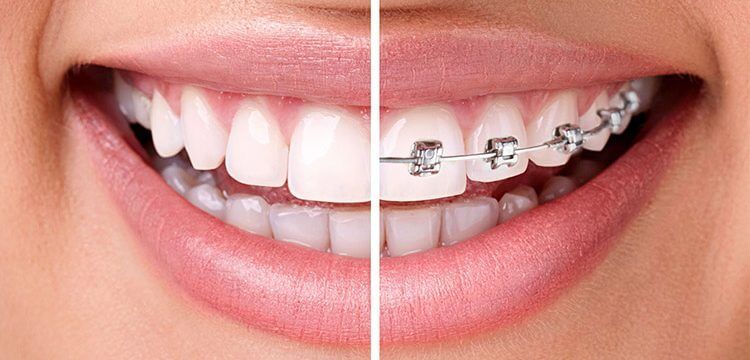The Importance of Age 7 in Orthodontics: Why Early Evaluations Matter?
Age can play a significant role in orthodontics when determining the best treatment options for your child. The most significant of these ages is what is often referred to as the “magic age” of 7. This age is not random. During this time, there are many developmental changes happening that can influence your child’s dental health.
Here we’ll explore why this age is so important and how early evaluation can allow for your child to live a healthier life with a more confident smile.

The Magic Age
At around the age of 7, most children have a mix of baby teeth and emerging adult teeth. During this time, orthodontists are able to see how those permanent adult teeth are coming in and anticipate if there will be any alignment issues. Early detection can allow for timely intervention that can make any future treatments less complex, invasive, and expensive.
Children are at a significant growth phase at the age of 7, which means things are much more malleable, and their bodies are more easily able to adapt to change. Therefore, orthodontists have a much better likelihood during this time of being able to influence the development of teeth and jaw structures positively. By guiding growth early on, orthodontists can prevent serious issues that if not treated early could lead to a need for surgical intervention. Simply put, early treatment leads to a more natural progression of dental health.
Early evaluation also creates a crucial baseline for your child’s dental health. The initial assessment isn’t about just identifying immediate issues; it serves as a reference point for future evaluations allowing effective ongoing monitoring. Oftentimes, an orthodontist will be able to predict future changes and can work with your child to take preventative measures.
Misalignment
Arguably the most important advantage of early orthodontic evaluations is discovering misalignment issues before they become too severe. If an orthodontist is not able to guide teeth into their correct positions early enough, your child could have to have more complex procedures later in their life like tooth extractions or jaw surgery. Misalignments can also affect the entire makeup of your face. However, if you address them early while your child’s facial structure is still developing you can improve, function, aesthetics, and overall oral health.
Cross Bites and Overbites
Cross bites and overbites are among the most common issues detected during early evaluations, and are especially crucial to catch early, because if they are left unattended, they can lead to severe complications like speech difficulties and uneven tooth wear. Treatment at this stage can also enhance facial symmetry and improve bite function.
Crowding and Spacing Issues
Crowding or spacing issues are next on the list of issues that can be detected by an orthodontist early on in your child’s life. Spacing issues can lead to improper jaw development and the misalignment of teeth. By ensuring early on that there is enough space for all of your child’s permanent teeth, you are saving your child from costly and invasive future procedures.
Problematic Habits
Many children have habits such as thumb sucking or mouth breathing that can greatly impact their dental development. Through an evaluation an orthodontist can identify these habits, and provide ways to break them early in order to prevent long term dental issues.
What Does the Treatment Process Look Like?
Every child is unique and so are their orthodontic needs. When you bring your child to an orthodontist at age 7, your child receives a personalized treatment plan tailored to their specific dental needs. The plan takes into account your child’s growth patterns, potential future issues and individual comfort preferences, which makes sure that they have as smooth of a treatment journey as possible.
The first step is an initial consultation with an orthodontist. During this visit, the orthodontist thoroughly examines your child’s teeth, jaw, and bite. X-rays and photographs may also be taken in order to get a more comprehensive view.
After identifying potential issues, the orthodontist discusses the potential treatment options with you, providing a clear outline of the benefits and risks associated with each path. This stage is crucial because it makes sure that you fully understand what is happening and are able to make an educated and informed decision.
If it’s decided that moving forward with treatment makes sense, the orthodontist creates a detailed treatment plan tailored to your child’s specific needs. This plan outlines the steps involved in treatment, the estimated duration of treatment, and the expected outcomes. A clear treatment plan gets everyone on the same page and provides the roadmap to your child having a healthier future.
Goal of Early Evaluation
The goal of starting orthodontic treatment at a younger age is to correct issues before they become more complex. Your child can have a much more straightforward, less expensive and less invasive treatment experience by catching issues early. A win-win for everyone!
Teeth and smiles are tied closely to self esteem and confidence. Growing up is a difficult process and as we all know, kids aren’t always the nicest to one another. Early orthodontic treatment can help your child feel more comfortable and self assured in social situations, enhancing their overall quality of life.
Related to that, the orthodontic solutions themselves can help make your child feel more comfortable during orthodontic treatment. For example, for some children, early intervention could involve a more modern orthodontic solution like clear braces or children’s Invisalign. These solutions are focused on providing a more aesthetic solution to the traditional metal braces, which can be particularly beneficial for children who feel self conscious about getting braces. Clear braces and Invisalign offer the dual benefit of comfort and discretion. There are many instances where these solutions make a child more willing to comply with the treatment, maintaining a positive self image.
Finally, something that goes under the radar with orthodontics is that it is important for oral hygiene. Properly aligned teeth are easier to clean and maintain, reducing the risk of tooth decay, gum disease,and other oral health issues. Early treatment lays the foundation for a lifetime of healthier hygiene.
Conclusion
To sum things up, the age of 7 is indeed a “magic age” in orthodontics, because it offers a valuable opportunity for early intervention. It’s important to find and tackle issues before they become more serious, setting the stage for a healthier and more confident smile. By taking your child to get an orthodontic evaluation, you are offering both them and yourself peace of mind that they will live their life with the smile they want.
If you have a child approaching the age of 7, consider scheduling an orthodontic evaluation with Blacker Orthodontics. Our team is dedicated to ensuring your child receives the best personalized care possible and taking care of their unique needs. Together we can start your child on a lifetime path of dental health, providing them with all the benefits that come with a beautiful, healthy smile.



